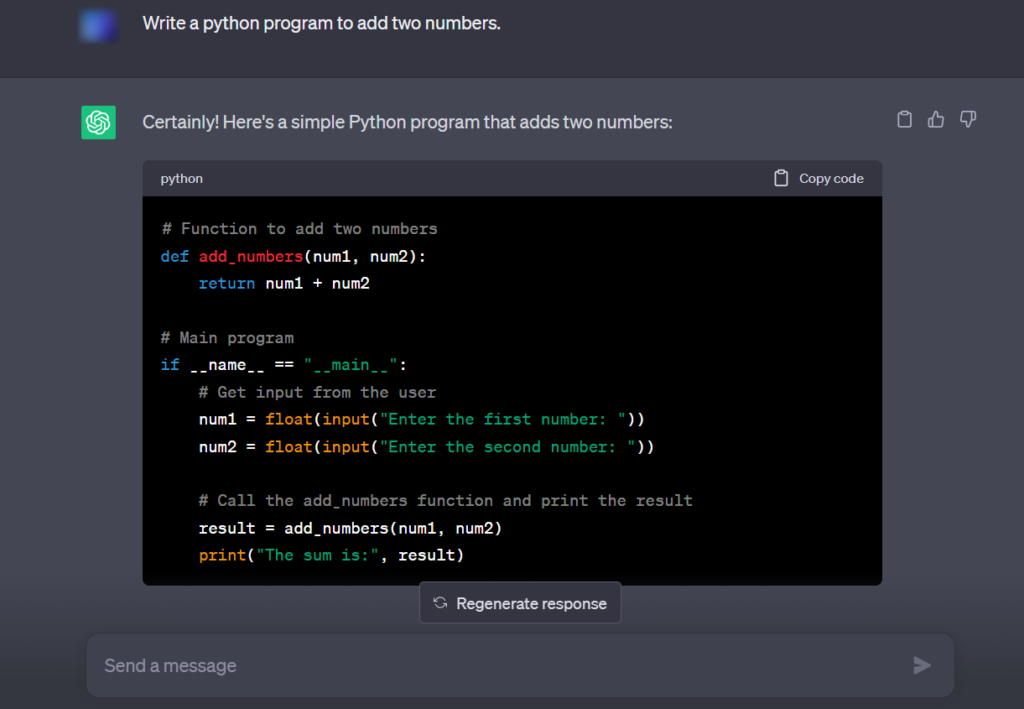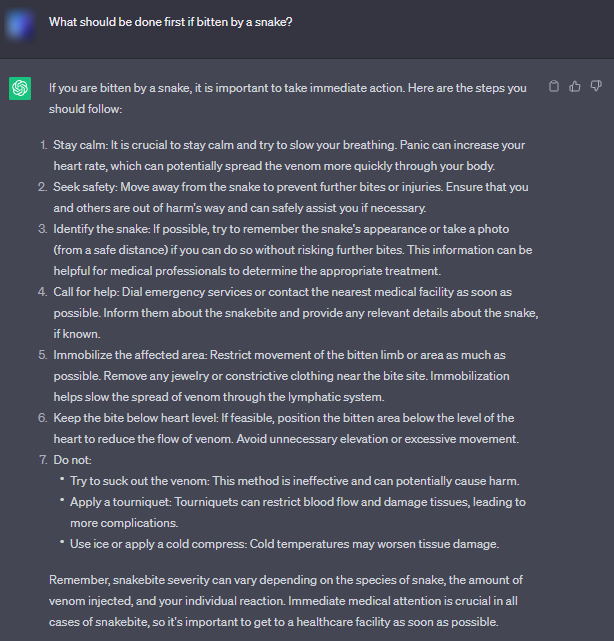Before delving into ChatGPT, we must first consider the idea of Artificial Intelligence (AI), specifically the AI language model. As a result, two questions arise.
(1) What exactly is Artificial Intelligence (AI)?
(2) What is an AI language model?
1. Artificial Intelligence (AI)
The development of computer systems that can carry out tasks that traditionally require human intelligence is referred to as artificial intelligence (AI). The goal of this multidisciplinary discipline is to build intelligent computers that are capable of perception, reasoning, learning, and problem-solving. It includes computer science, mathematics, cognitive science, and other fields. Artificial intelligence (AI) systems strive to imitate human cognitive skills like language comprehension, pattern recognition, decision-making, and situational flexibility. They can process enormous volumes of data, learn from it, and apply that knowledge to carry out particular tasks or offer insightful information. AI has revolutionised the way people live, work, and interact with technology by finding applications in a variety of sectors, including healthcare, banking, transportation, and entertainment.

2. AI Language Model
An artificial intelligence system that focuses on comprehending and producing human language is known as an AI language model. To learn the linguistic patterns and structures, it is trained on enormous datasets of text from many sources, including books, papers, websites, and more. These models process the incoming text and produce coherent and contextually appropriate answers using statistical methods and neural networks. AI language models are able to understand and produce natural language at a level that closely resembles human conversation. This enables them to communicate with users by answering queries, providing information, and producing content. They are now very helpful in conversational AI systems such as chatbots, virtual assistants, and others that enable human-like interactions and improve user experiences. An example of an AI language model is ChatGPT.
About ChatGPT
ChatGPT is a sophisticated language model that has transformed the field of human-AI communications. ChatGPT, created by OpenAI, makes use of the cutting-edge GPT-3.5 architecture to enable dynamic and interesting discussions with users. This clever chatbot is designed to recognise and generate human-like prose, making it a handy tool for a variety of applications. ChatGPT excels at understanding context, generating coherent responses, and mimicking human cognitive processes, whether it’s answering difficult queries, providing personalised recommendations, or engaging in casual chat. ChatGPT is capable of offering accurate and up-to-date information across a wide range of topics due to its enormous knowledge base gained through its training on a wide range of internet sources. Its adaptability to various speech styles and preferences enables a seamless and engaging user experience. ChatGPT has become a powerful ally in supporting users, extending their knowledge, and promoting meaningful relationships in an increasingly digitised environment by harnessing artificial intelligence.

Impact of ChatGPT in different fields:
ChatGPT has made a considerable impact in the domains of education, healthcare, and agriculture due to its sophisticated language capabilities and contextual comprehension.
1. Education:
ChatGPT has shown to be a great educational tool. It can function as a personalised tutor, offering students with immediate responses and explanations to their questions. The model can help answer complex inquiries, explain concepts, and provide educational tools. It may also provide interactive and interesting content, which can help with the creation of online courses and instructional resources. Furthermore, ChatGPT can help with language learning by allowing users to practise conversations, correct grammar, and propose vocabulary. It offers the potential to increase access to high-quality education while also allowing for more personalised learning experiences.
Pros:
(a) Personalized learning: ChatGPT can provide students with customised educational content and guidance depending on their specific needs.
(b) 24/7 availability: It makes it possible for students to get information and assistance whenever they need it, supporting continuous learning.
(c) Interactive learning experiences: Students’ learning experiences can be improved by using ChatGPT to engage them in interactive discussions, tests, and simulations.
Cons:
(a) Lack of human connection: Human interaction is essential for emotional support and complex understanding, and ChatGPT cannot completely replace it.
(b) Limited practical application: Some topics could call for actual participation or physical proximity, which ChatGPT cannot deliver.
(c) Potential biases: ChatGPT may unintentionally reinforce or sustain biases in educational content if the training data is biassed or deficient.

2. Healthcare:
ChatGPT has demonstrated promise in the healthcare industry in a number of ways. It can help medical practitioners by giving them instant access to clinical guidelines, research articles, and medical literature. By examining symptoms and offering educated guesses, ChatGPT can aid in the diagnosis of common illnesses. Additionally, it can provide patient education and support, addressing issues and disseminating knowledge regarding medications, therapies, and lifestyle changes. By engaging in therapeutic dialogues and providing tools for stress management and self-care, ChatGPT can also help mental health.
Pros:
(a) Quick information retrieval: The retrieval of medical data, recommendations, and academic publications can be helped via ChatGPT for healthcare practitioners.
(b) Remote patient support: It can provide people with basic health counselling, symptom evaluation, and general health knowledge remotely.
(c) Medical training and education: Medical students can benefit from ChatGPT as a useful learning tool that can help them gain knowledge.
Cons:
(a) Diagnostic limitations: Due to its limitations in terms of physical examination, ChatGPT shouldn’t be utilised as a replacement for expert medical diagnosis.
(b) Ethical concerns: When utilising ChatGPT in a medical setting, privacy, security, and confidentiality of patient information must be carefully considered.
(c) Liability issues: There may be ethical and legal repercussions if ChatGPT responds in a wrong way or inaccurately.

3. Agriculture:
The agricultural sector may benefit from ChatGPT as well. It can give farmers immediate access to agricultural data such as crop management techniques, pest control methods, and weather forecasts. ChatGPT can help to spot nutrient deficits, plant diseases, and suggest the best corrective actions. Additionally, by offering specialised recommendations depending on crop type, soil conditions, and regional climatic data, it can help with resource allocation optimisation, such as water and fertiliser use. This AI model has the potential to advance sustainable agriculture, boost crop yields, and enhance agricultural practises.
Pros:
(a) Crop management and advice: ChatGPT can give farmers timely information on crop maintenance, pest management, and successful farming techniques.
(b) Market insights: It can help farmers gain access to market information, spot pricing patterns, and decide on agricultural sales and purchases with knowledge.
(c) Knowledge sharing: Farmers can benefit from one other’s experiences by sharing knowledge and expertise through ChatGPT.
Cons:
(a) Limited access: Farmers may have trouble using ChatGPT in remote places with limited internet connectivity.
(b) Contextual limitations: The suggestions made by ChatGPT might not necessarily be in line with regional circumstances, customary agricultural methods, or cultural considerations.
(c) Dependency on technology: Farmers’ knowledge and decision-making abilities may suffer if they rely too heavily on ChatGPT without comprehending the fundamentals of agriculture.

Although ChatGPT has many advantages, technology should be utilised as a tool to supplement rather than replace human experience. The constraints and possible dangers connected to its application in various domains must be carefully taken into account.

